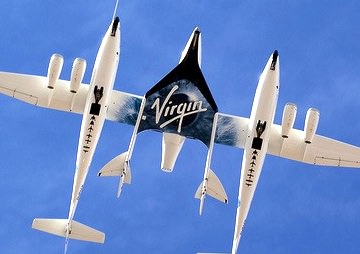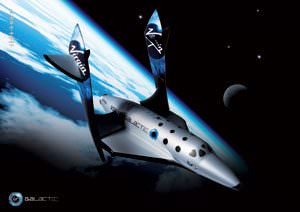Experimental Fuel May Have Been Factor in Virgin Galactic Crash
Experts say the company was warned about the potential instability of a new hybrid fuel that was used in the plane that broke up over the Mojave Desert Friday, killing the co-pilot. Virgin Galactic's SpaceShipTwo. (CC BY 2.0)
Virgin Galactic's SpaceShipTwo. (CC BY 2.0)
Experts say Virgin Galactic was warned about the potential instability of a new hybrid fuel that was used in the plane that broke up over the Mojave Desert Friday, killing the co-pilot. Investigators say it could be a year until the full report on the crash of SpaceShipTwo is complete.
The Guardian reports:
Rocket engineers and safety experts have been warning for at least a year about the potential instability of nitrous oxide. Carolynne Campbell, a rocket engineer who is the lead expert on hybrid propulsion systems for the International Association for the Advancement of Space Safety (IAASS) told the Guardian that when it was used by dentists in its commonly-known form of “laughing gas”, nitrous oxide was “mild, gentle stuff”. In the highly dynamic environment of a rocket engine, though, it was “extremely unpredictable – it has a bit of a devil in it”.
Campbell pointed out that as recently as six months ago the Virgin Galactic website was describing nitrous oxide as “benign” and “stable” yet the gas was a factor in the 2007 explosion at the Virgin Galactic spaceport in which three workers died.
“They knew that three people were killed by this stuff, and yet they persisted in presenting it as safe, stable and benign,” Campbell said.
Virgin boss Sir Richard Branson hopes to be able to send a ship carrying six passengers (ticket price, $250,000) on each flight to the edge of Earth’s atmosphere. The company aimed to premiere the commercial flights as early as next spring.
U.S.-based British rocket scientist Geoff Daily, who has been highly critical of the project, said little is known about how nitrous oxide behaves in large quantities. SpaceShipTwo’s tank was believed to have carried 11,000 to 12,000 pounds of the gas.
“It’s still very poorly understood in large quantities. … The temperature of the fuel is critical,” said Daly, who had sent several emails to officials at the Federal Aviation Administration (FAA) last year warning of the potential for another disaster if test flights were given the go-ahead.
Daly also argued there were “fundamental design flaws” in the propulsion system. “The delivery system is solid, the motor is bolted to the fuel tanks. There is no flexibility in the tank and motor, any vibration can result in the fracture and failure of the engine system.”
In an interview with The Guardian two weeks ago, Virgin Galactic’s Chief Executive George Whitesides said the new hybrid fuel had passed ground tests and was undergoing “qualification tests” to prove it would perform as predicted. Former company President Will Whitehorn, who cited the project’s 2004 start date as evidence it wasn’t rushed, questioned whether the rocket had exploded. “I don’t know the cause, but looking at the pictures, the nitrous oxide tanks are still intact. An aircraft breaking up is something completely difficult. The National Transportation Safety Board will begin producing interim evidence in the next few days that will eliminate some of the assumptions being made without basis in fact.”
Read more here.
— Posted by Alexander Reed Kelly.
Your support is crucial...As we navigate an uncertain 2025, with a new administration questioning press freedoms, the risks are clear: our ability to report freely is under threat.
Your tax-deductible donation enables us to dig deeper, delivering fearless investigative reporting and analysis that exposes the reality beneath the headlines — without compromise.
Now is the time to take action. Stand with our courageous journalists. Donate today to protect a free press, uphold democracy and uncover the stories that need to be told.






You need to be a supporter to comment.
There are currently no responses to this article.
Be the first to respond.